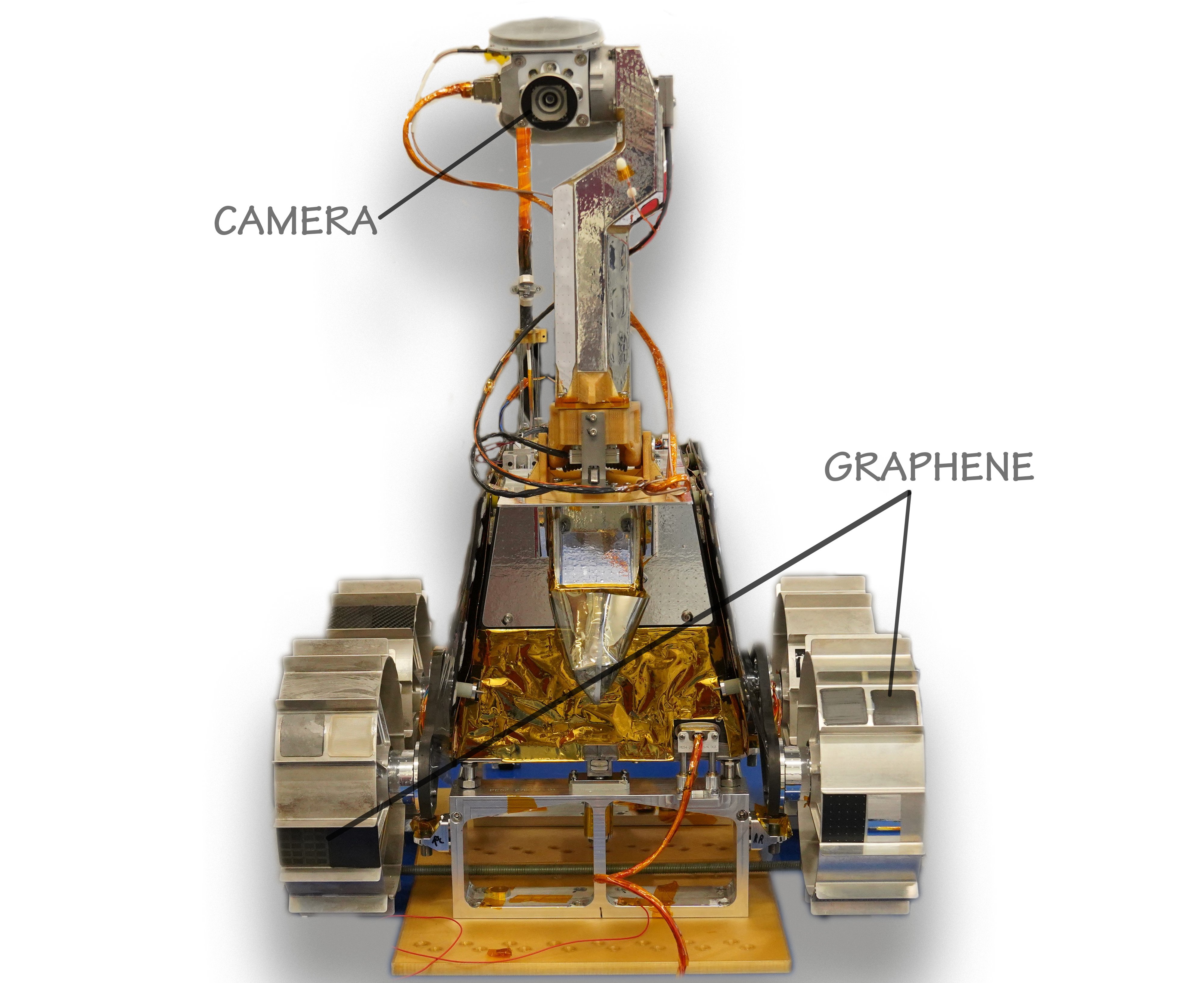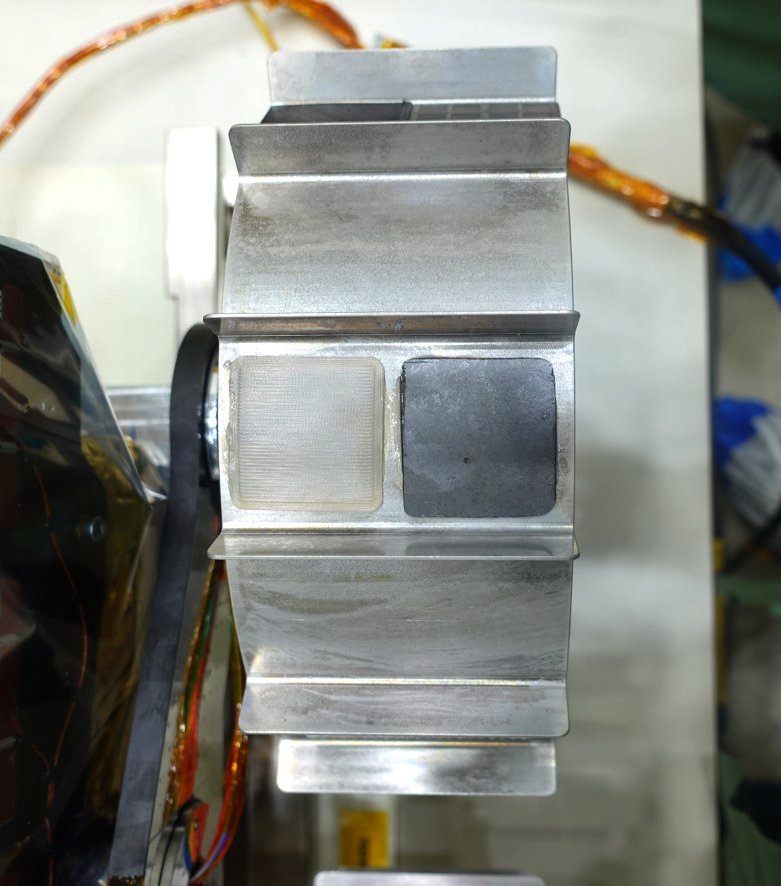| Nov 29, 2022 |
Graphene goes to space and to the moon
(Nanowerk News) Graphene Flagship Partners University of Cambridge (UK) and Université Libre de Bruxelles (ULB, Belgium) paired up with the Mohammed bin Rashid Space Centre (MBRSC, United Arab Emirates), and the European Space Agency (ESA) to test graphene on the Moon. This joint effort sees the involvement of many international partners, such as Airbus Defense and Space, Khalifa University, Massachusetts Institute of Technology, Technische Universität Dortmund, University of Oslo, and Tohoku University.
|
|
The Rashid rover is planned to be launched on 30 November 2022 from Cape Canaveral in Florida and will land on a geologically rich and, as yet, only remotely explored area on the Moon’s nearside – the side that always faces the Earth. During one lunar day, equivalent to approximately 14 days on Earth, Rashid will move on the lunar surface investigating interesting geological features.
|
 |
| The Rashid moon rover. (Image: MBRSC)
|
|
The Rashid rover wheels will be used for repeated exposure of different materials to the lunar surface. As part of this Material Adhesion and abrasion Detection experiment, graphene-based composites on the rover wheels will be used to understand if they can protect spacecraft against the harsh conditions on the Moon, and especially against regolith (also known as ‘lunar dust’).
|
|
Regolith is made of extremely sharp, tiny and sticky grains and, since the Apollo missions, it has been one of the biggest challenges lunar missions have had to overcome. Regolith is responsible for mechanical and electrostatic damage to equipment, and is therefore also hazardous for astronauts. It clogs spacesuits’ joints, obscures visors, erodes spacesuits and protective layers, and is a potential health hazard.
|
|
University of Cambridge researchers from the Cambridge Graphene Centre produced graphene/polyether ether ketone (PEEK) composites. The interaction of these composites with the Moon regolith (soil) will be investigated. The samples will be monitored via an optical camera, which will record footage throughout the mission. ULB researchers will gather information during the mission and suggest adjustments to the path and orientation of the rover. Images obtained will be used to study the effects of the Moon environment and the regolith abrasive stresses on the samples.
|
|
This moon mission comes soon after the ESA announcement of the 2022 class of astronauts, including the Graphene Flagship’s own Meganne Christian, a researcher at Graphene Flagship Partner the Institute of Microelectronics and Microsystems (IMM) at the National Research Council of Italy.
|
|
“Being able to follow the Moon rover’s progress in real time will enable us to track how the lunar environment impacts various types of graphene-polymer composites, thereby allowing us to infer which of them is most resilient under such conditions. This will enhance our understanding of how graphene-based composites could be used in the construction of future lunar surface vessels,” says Sara Almaeeni, MBRSC science team lead, who designed Rashid’s communication system.
|
 |
| Close-up of one of the Rashid moon rover’s wheels with polymer samples with and without graphene. (Image: Laura Borella)
|
|
“New materials such as graphene have the potential to be game changers in space exploration. In combination with the resources available on the Moon, advanced materials will enable radiation protection, electronics shielding and mechanical resistance to the harshness of the Moon’s environment. The Rashid rover will be the first opportunity to gather data on the behavior of graphene composites within a lunar environment,” says Carlo Iorio, Graphene Flagship Space Champion, from ULB.
|
|
Leading up to the Moon mission, a variety of inks containing graphene and related materials, such as conducting graphene, insulating hexagonal boron nitride and graphene oxide, semiconducting molybdenum disulfide, prepared by the University of Cambridge and ULB were also tested on the MAterials Science Experiment Rocket 15 (MASER 15) mission, successfully launched on 23 November 2022 from the Esrange Space Center in Sweden. This experiment, named ARLES-2 (Advanced Research on Liquid Evaporation in Space) and supported by European and UK space agencies (ESA, UKSA) included contributions from Graphene Flagship Partners University of Cambridge (UK), University of Pisa (Italy) and Trinity College Dublin (Ireland), with many international collaborators, including Aix-Marseille University (France), Technische Universität Darmstadt (Germany), York University (Canada), Université de Liège (Belgium), University of Edinburgh and Loughborough.
|
|
This experiment will provide new information about the printing of GMR inks in weightless conditions, contributing to the development of new addictive manufacturing procedures in space such as 3d printing. Such procedures are key for space exploration, during which replacement components are often needed, and could be manufactured from functional inks.
|
|
“Our experiments on graphene and related materials deposition in microgravity pave the way addictive manufacturing in space. The study of the interaction of Moon regolith with graphene composites will address some key challenges brought about by the harsh lunar environment,” says Yarjan Abdul Samad, from the Universities of Cambridge and Khalifa, who prepared the samples and coordinated the interactions with the United Arab Emirates.
|


